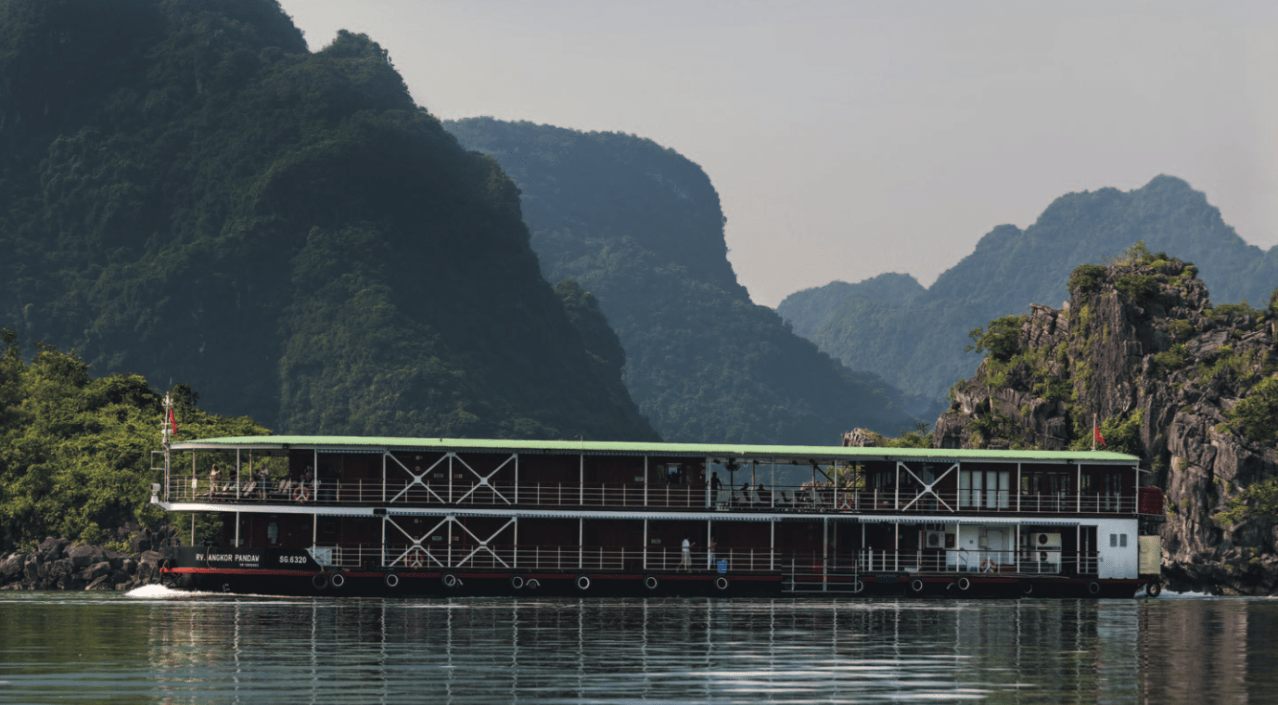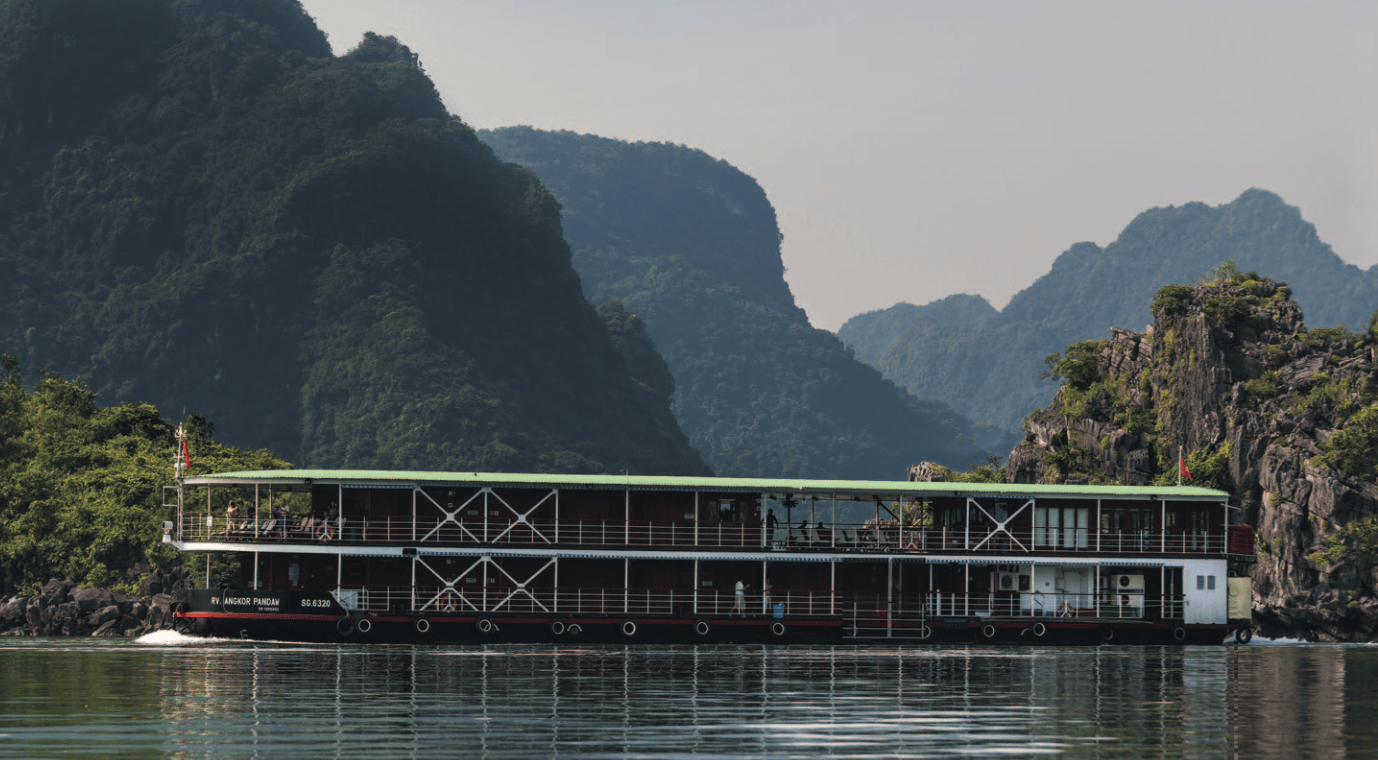‘The road to hell is paved with good intentions’. Nowhere is this so true as in the streets of Calcutta, departing point of our cruise. The legacy of Mother Teresa has placed a stigma on the ancient capital of the British Raj, now forever considered a city of the dying and destitute. Unsurprisingly, Calcutta does not feature all that much in tourist guides, which is a mistake, because from my experience, it is the most friendly, cultivated and humane among all of the Indian megacities. A visit should be planned sooner than later since, if nothing is done, the beautiful palaces will hardly survive another decade. They are quickly crumbling under the embrace of vegetation which has turned the city into a kind of living Angkor Wat.
For the next three days, all the way to the suburbs of Dhaka, there was just mysterious, impenetrable jungle
As in every major Indian city, the traffic and the pollution soon become exhausting. What better than to take refuge on a ship departing for a serene river cruise? The Pandaw waits along the quay of the Hooghly River by one of the first botanical gardens of Asia, where the East Indian Company used to study the exotic plants arriving from faraway lands. The Pandaw is a replica of the old steamers built in Glasgow to provide water transport for the rivers of Burma, a country where, until very recently, most transportation was only possible by river.
Paul Strachan, an adventurous Scottish entrepreneur from a family of shipbuilders, started restoring and rebuilding these old steamers in the middle of the 1990s in Burma. His company has safely navigated all sorts of daunting obstacles from the recent pandemic to various coup d’etat, military juntas and international sanctions. Over the years, Strachan’s operation has grown from just a couple of boats to a fleet of 17 ships, now covering most of the Asian rivers from Vietnam to India. These ships, made of steel and warm teak wood, with spacious saloons and cabins, bring to mind the steamer in Agatha Christie’s Death on the Nile.
Passengers are few and space is generous. Suddenly, on the first evening, while having a drink on the deck, I heard a deep bellowing in the distance. The crew started bustling around ‘Tidal bore, the tidal bore!’ Orders were quickly given to cast off at once, the engine put in motion just in time. Along the shore, I could see a wave, about two meters in height, crashing over the shore. Departing in haste, the ship’s stern hit the quay and could easily have been wrecked. Fortunately, we found refuge in the middle of the river, zigzagging among other ships whose anchors were suddenly dragging under the pressure of an eight-knot tidal current.
Apparently, these tidal waves can happen in the early spring and cause tremendous damage along the river. The next day we started heading south towards the enormous delta of the Ganges and Brahmaputra into the poorly charted territory of the Sundarbans, the largest mangrove forest in the world. After a few hours of tranquil sailing, we forgot the excitement of the night before and I began contemplating the gentle river life, the fishing boats, people bathing and occasional sailing vessels. The bliss of gliding down a river on a steamship is a more tranquil experience than travelling by land on the noisy, bumpy roads of the subcontinent.
A huge number of ships at the mouth of the Hooghly were waiting to enter the harbour and all sorts of smaller, colourful, vessels were sailing around us. Some ferries were so overloaded with goods or people that it looked as if just a light wave could capsize them. At first glance a reckless behaviour, but we are in India, a country still immune from the full-cover insurance obsession of present western society, where the idea of an afterlife is not a theory but a tangible reality.
Our destination lay through the Sundarbans; Dhaka, the capital of Bangladesh. After a couple of gentle cruise days, we turned East towards the Bangladesh border, villages became sparser while more and more mangrove jungles surrounded us. Life is extremely difficult on these shores. The area is prone to terrible cyclones. The name of these violent storms was coined by Mr Piddington, an Englishman who lived in Calcutta, at the beginning of the 19th century. Each year storms destroy the fragile huts of the villagers and ruin the paddy fields used to cultivate rice.
Bengali tigers roam these riverbanks, the largest feline predator in Asia. About 300 live in the Sundarbans and because of encroaching overpopulation, the poor Bengalis who live too close to the jungle are always in danger of getting attacked. In the last Indian village before crossing to Bangladesh we met Mr Gobindo, a friendly fisherman who was attacked, but fortunately survived. He showed us the marks of the tiger teeth on his leg and on his head. Incredibly, he was able to fight back and he escaped by miracle, managing to chase the huge feline with his oar…
Gobindo and his fellow villagers were the last humans we encountered. For the next three days, all the way to the suburbs of Dhaka, there was just mysterious, impenetrable jungle. We tried once in a while with a smaller boat to enter the labyrinth of mangroves through small channels. The bird life was magnificent, we could see deer, huge monitor lizards, beavers, and Ganges dolphins with typical elongated beaks. Floating around us were pieces of dark wood which, at closer inspection revealed, the presence of two piercing eyes. These were estuarine crocodiles waiting for prey. The rest was silence. At one moment we saw a sign of Her, in the mud, the fresh pugmarks of the tiger. Our guide said she must have been there a few hours ago. Like a mysterious Indian goddess, she was probably watching us unseen. Perhaps better so, since in the Sundarbans, they say that if you see the tiger you hardly ever return to tell it again.
Heading north, human life began to reappear. We were in Bangladesh, approaching Dhaka. The landscape and the people looked as in India. The only difference was that we could only hear the chant of the Muezzin; no more Hindu temple songs to accompany the sunrises on the gentle waters. This is the unfortunate fruit of partition. Bangladesh is now mostly a monotheistic Islamic country, even if it espouses a very gentle, more tolerant form of soft Islam that is influenced by Sufism.
We moored south of Dhakka. It was with regret that we had to leave the calm and gentle life of the river cruise. Entering the buzzing traffic of Dhaka was a brutal awakening that felt like going from Nirvana back to Samsara, the material world. A modern jungle of double-decker buses, motor rickshaws, goats, bicycles and all sorts of unthinkable vehicles. Overpopulation, partition, and the war with Pakistan have left permanent scars on the urban life of the city. The poor state of the so-called pink palace, the abode of the last local ruler, showed all the signs of the general decadence of a city which once was called the Venice of the East. The unlimited extravagances in which the ruling Nawabs indulged while the sultanate was falling apart is on display in the National Museum, where one could even see a carpet for his throne chamber made of fine strings of Ivory.
From Dhaka we flew back to Calcutta. Strange as it may sound, coming from Dhaka, the city of Mother Theresa seemed suddenly as neat as Switzerland, proof of the ultimate unreality of any perception, which is at the core of ancient Indian wisdom.







Comments